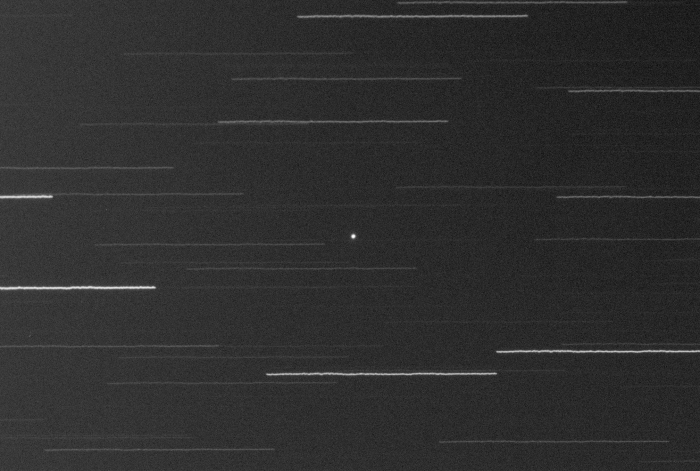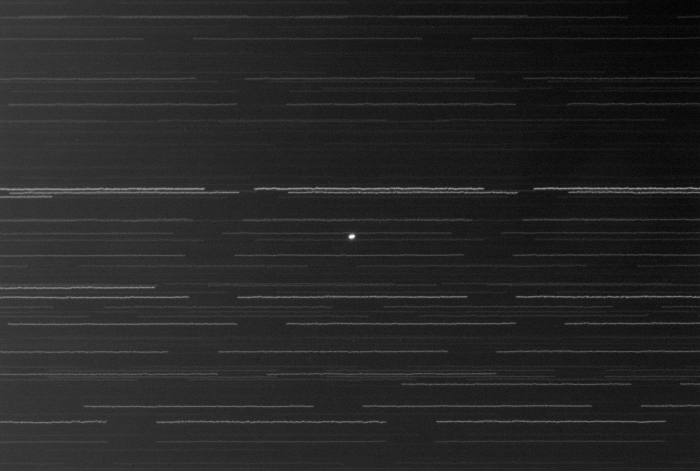
Roughly 500 geostationary satellites are currently placed in a static orbit (as viewed by a ground-based observer) about our planet at an
altitude ranging from 500 to 40,000 kilometers. The closest satellites orbitting the planet are believed to be spy satellites whereas most
distant are the geostationary group of satellites with an instrinsic magnitude of 11 or greater. As a result, due to their distance and faint
magnitude, geosats may be classified as the DSO's of the satellite world. At their high altitude not only can they virtually view the complete
globe below them but they also have the unique characteristic of having their orbital speed closely match the rotational speed of the earth
and, as such, give the impression to a ground-based observer of being stationary above the planet. These satellites have a wide range of
applications and functions and include remote sensing (Meteosat, GOES-East and GOES-West, GMS etc) and such telecommunication functions as
direct broadcast voice and video communications as well as live television coverage (Astra, Hot Bird, Telstar etc) by virtue of the fact they
can beam their signal from a "fixed" point in space relative to a ground source.
Note: The two primary Astra fleets are located at 19.2° and 28.2° East comprised of Astra 1KR, 1L, 1M and 2C at
19.2° E and Astra 2A, 2B, 2D and 1N at 28.2° E. An effort is underway to establish a third fleet at orbital position 23.5° East to further
serve central European markets and the Middle East with respect to digital TV and radio for both the DTH and cable markets as well as multimedia
and interactive services. The first satellite to occupy this new orbital slot was Astra 3A and which was launched on March 29, 2002 from Kourou,
French Guyana using an Ariane 44L rocket, weighing 1.500 tons and featuring 20 Ku-band transponders. With a proposed lifetime of 10 years,
Astra 3A is now nearing its mission and is about to be replaced by Astra 3B and which is already in place also at the 23.5° East orbital slot.
More specifically, Astra 3B was launched on May 21, 2010, also from Kourou, French Guyana using an Ariane 5 ECA rocket, weighing 5.472 tons
and featuring 60 Ku- and 4 Ka-Band transponders.
Note: The first image below represents a single one-minute exposure whereas the second image below is the sum of
the fifteen one-minute exposures captured and which reveals some very slight motion for the four Astra satellites during the approximate 20-minute
span and which quite often is characteristic of geosats (ex. due to inclination).
|
NORAD ID: 36581 Common Name(s): Astra 3 B Int Code: 2010-021A Location: 23.5° East Perigee: 35,779.1 km Apogee: 35,807.2 km Inclination: 0.0° Period: 1,436.1 min Launch Dates: May 21, 2010 Origin: Luxembourg |
 
|
Date: Nov 02, 2012 22:10 - 22:27 UT+2 Location: Athens, Greece Equipment: AP 305/f3.8 Riccardi-Honders AP 1200GTO GEM SBIG ST-10XME SBIG CFW10 SBIG LRGB filters Integrations:
Image Scale: 1.21" per pixel Temperatures:
Software: CCDSoft V5.00.201 CCDStack V1.6.0.5 Photoshop CS5 |